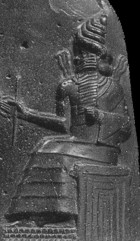Law in Mesopotamia
2 min read
One of the greatest achievements of Mesopotamians are the first written codified laws which reveal the level of social, political, economical and legal development of the Mesopotamian civilization. Law in Mesopotamia is frequently closely associated with Code of Hammurabi inscribed on seven foot and four inch (2,25 meter) tall stela discovered at Susa but the oldest law codes date from the Sumerian Period. The oldest example of a legal code is attributed to Urukagna who ruled the Sumerian city-state of Lagash in the 24th century BC although the actual text has never been discovered.
The Code of Ur-Nammu created by Ur-Nammu of Ur (21s century BC) is the oldest known code of law which is only partly preserved. The laws were inscribed on a clay tablet in Sumerian language and arranged in casuistic form, a pattern in which a crime is followed by punishment which was also the basis of nearly all later codes of law including the Code of Hammurabi. Code of Ur-Nammu is also notable for instituting monetary compensations for inflicting bodily injuries which is considered very advanced for the oldest known code of law.

In contrary to Code of Ur-Nammu, the Code of Hammurabi from the 18th century BC bases on principle “an eye for an eye, a tooth for a tooth” (lex talionis). One of the most famous ancient codes contains 282 judgements of civil and criminal law. The penalties vary from crime to crime as well as on the social status of the offender although even slaves had some rights.
Hittite cuneiform tablets from the 14th century BC found at Hattusa also include number of Hittite laws which foresee less severe penalties than the Babylonian code of laws. Penalties were in some cases were even reduced at least twice. Hittite laws also reveal a tension to more systematical arrangement from the most serious to minor violations. The Hittites did not follow lex talionis.
With rise of Assyria also occurred changes in penal laws which were severer and more brutal. Death penalty and corporal penalties such as flogging and cutting of ears and noses were very common, while forced labour was the most common punishment for less sever violations. Besides severer penalties the Assyrian law also reflects great change of social position of women. Women in Babylon and Hittite Empire were practically equal to men and were even allowed to divorce, while a man in Assyria was allowed to kill his wife if she committed adultery and to send his wife away without divorce money.